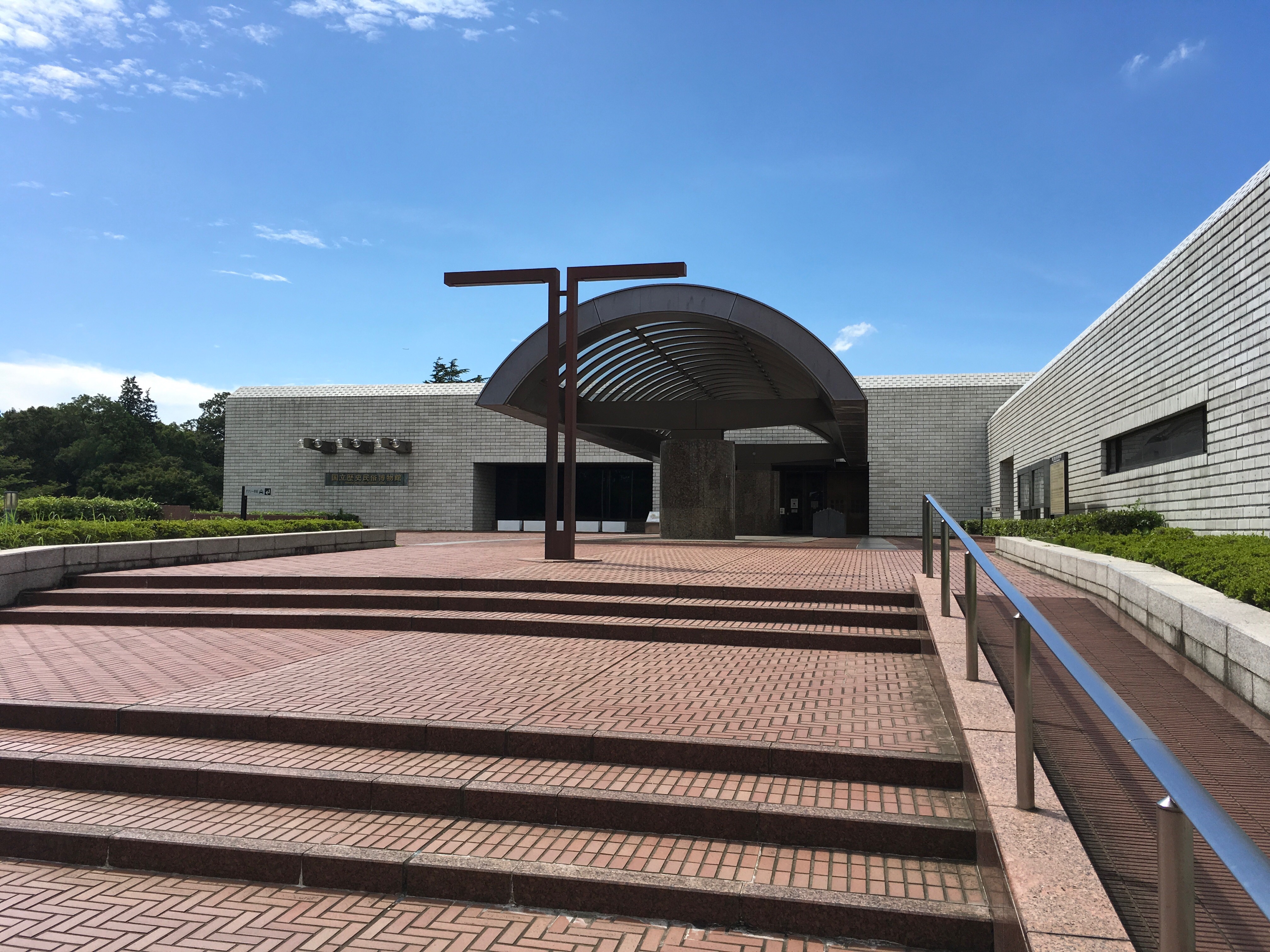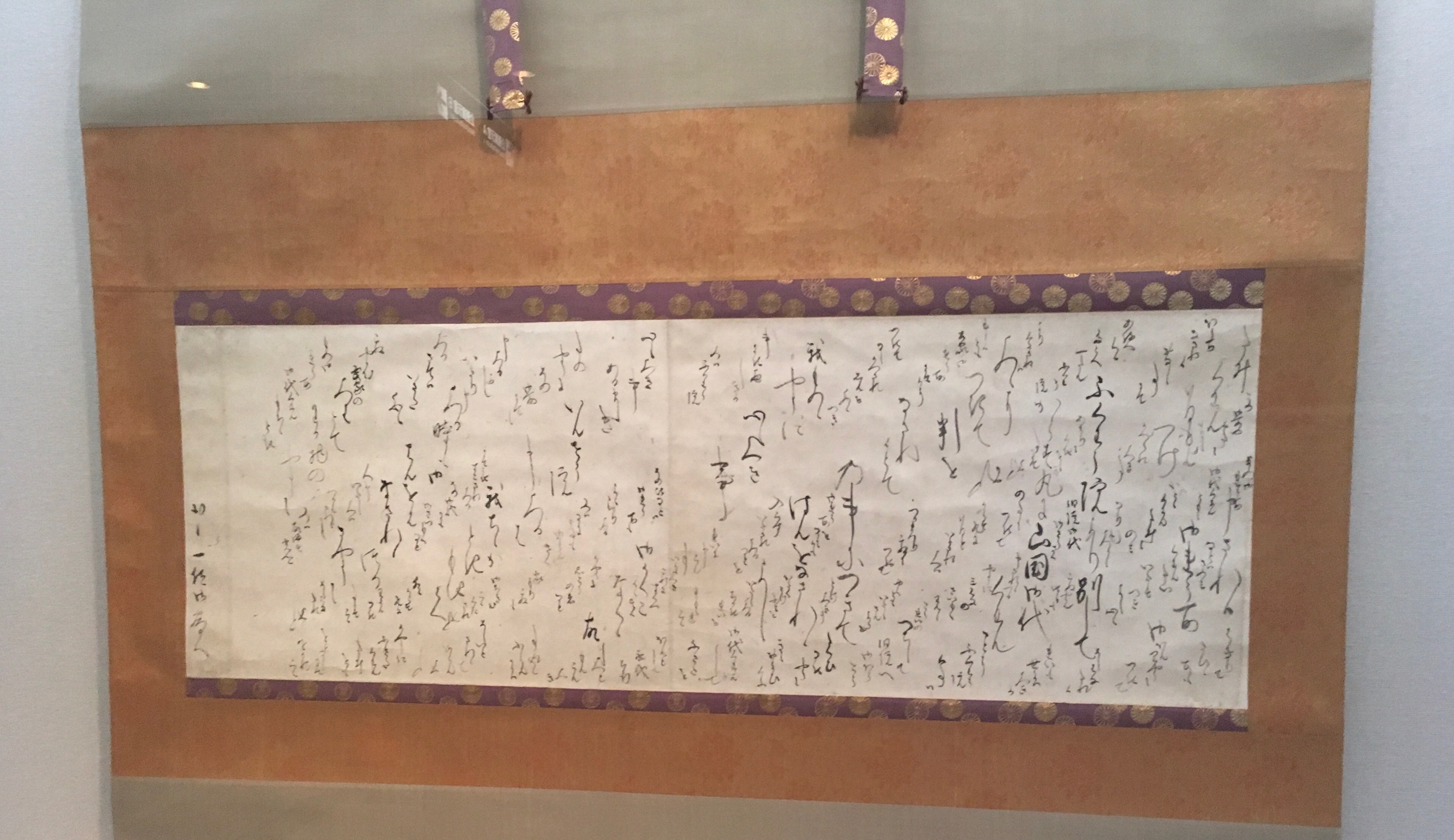
Although I always tell you the information of Ueno, this time I extended my legs to the National Historical Folk Museum in Sakura City, Chiba Prefecture (hereinafter referred to as "the history") and from October 16 (Tue) to December 9 (Sun) in 2018 We participated in the exhibition of the exhibition "Medieval documents in Japan – functions and shapes and international comparisons" held during the period, so we will deliver that report.
The history of studying and exhibiting Japanese history and culture comprehensively occupies a piece of Sakura Castle ruins and has a magnificent site.

This history exhibition will be exhibited "Medieval documents in Japan – Functions and forms and international comparison -". Document (monjiji) is an official document / private document with sender, recipient, task, date, etc. Although the political and cultural changes in the Middle Ages have changed drastically, as the document has also gradually changed its format accordingly, a variety of documents were created.
For documents living in modern society, it is difficult to understand the meaning at first glance for documents written in bamboo letters.
However, in this exhibition, why did you look at the shape rather than the content of the document, with the theme of "A variety of fun documents if you look at it alright if you can not read the bamboo letter? " Why did it look like that? We also devised ideas on the functional aspect of being able to enjoy the document anyone is exhibited.
World documents
Focusing not only on Japanese documents, but also on things created in the world. Documents in which a seal of Kanji has been pressed under the influence of China has been discovered in Iran even in the distance. In this exhibition, works and copies held in the country are exhibited.
By comparing it with the documents of the world, the characteristics of Japanese documents emerge.

Social change seen in documents
In ancient times the municipal office was responsible for approving the purchase and sale of the land. Hanko is pushed a lot in the sale.

"Okue Koi Gomi goshi Gakushi Yagi Towns Keda sales ticket" Year of the 15th year of the eleventh (796) November 2 Collection of the National Historic Folk Museum
In the Middle Ages, the Ruling State became ruins, and there was no public guarantee for selling land. Documents exchanged between the parties are left.

"Myonichoya Donation Direction" ("Hexaku Muromachiya Land Archaeological Site") Year 24 (1417) December 8 Collection of National Historic Folk Museum
This is written in hiragana, a document by women's hands. As medieval women had property rights, they were able to dispose of their own land.

"Ninja wo Tsunoda sale ticket" ("Hokkaku Muromachiya area old document") Yunkei 4 (1311) October 7 Collection of the National Historic Folk Museum
Medieval eco-spirit seen in documents
Since paper is a waste, it was often done to gather books that were finished and make them books and reuse the backside.
Although it seems that it was used for the diary etc of public houses and monks at the time of reuse, it seems that you can now see the documents left on the paper back as such diaries were preserved until future generations.
This screen is now unpacking the book on which the Buddhist scriptures were written, and displays the documents on the front.

"Takayamadera Old Collection Church Paper Back Painting Screen (Takayamaji Document)" Collection of National History Folk Museum
On the upper right is original autograph of Genji. I can not believe that such valuable documents were made on the backing paper, but I think that I am thankful for the ecological spirit of ancient people, considering that there are some documents that are conveyed because of secondary use.

"Takayamadera Old Collection Church Paper Back Painting Screen (Takayamaji Document)" Collection of National History Folk Museum
"Medieval recycled paper that was used by Emperor's secretary" Kuraito "named" Ink paper "(Shukushi). It is the thing which has reprinted the used paper.

"Late Satou Emperor Akira" Collection of National History Folk Museum
Emperor's original letter
Several handwritten letters of the Emperor of the Middle Ages are also exhibited.
It is a masterful brush.

"Letter of autograph of Emperor Godaigo" Motohiro 3 years (1333) September 22nd National Museum of Natural History Folk Museum
Since it is written in a kana, it seems to be a woman at first glance, but it is due to the brush of the Emperor.

"Later letter of Emperor Sohigo emperor's handwritten letter" Civilization 12 (1480) February 11 The collection of the National Historic Folk Museum
I'm writing a unique "scatter". Since it is written according to the regulations, how about trying to refer to the panel of the exhibition hall?
Let's know the document on the touch panel
Experience-type projects are prepared for this exhibition so that you can feel old documents close to you.
In the project using the latest technology "Read old documents with touch panel" installed at the entrance of the planning exhibition room A , touching the autographs of historical celebrities such as "Oda nobunaga vermiform letter", "Genji Genishi handwritten" You can watch it up with the zoom function. When you select "Reading mode", the voice speaks the contents of the document.

In "decryption mode", you can challenge to decipher an old document yourself. When you touch a character on the screen with your finger, how to read that character is displayed. I would like to read the contents of an ancient document carefully! If you are interested please try it.

Also, there is also a plan to magnify the document by 2000 times with a microscope and to observe the material of the paperboard (Washi used in the document).
For example, "Oda nobunaga vermiform form" is made of "rice paper (choshi)" containing rice flour, but if you expand it up to 2000 times you can see rice starch granules. This place is set up in the planning exhibition room B.

Let's press a sign
It is a reproduction of the sign used in the exhibition document. You can actually push yourself. Also, how to fold "origami" which is one of the way of using old paper documents is displayed.
Since Edo era wrote an expert opinion using this "origami", it seems to be used as meaning of "with origami" = "with guarantee"!

Although it was an exhibition with the theme of an old document which is not familiar as usual, it felt very interesting from the document that I could see and hear the change of society and the state of life at the time.
A plan exhibition that can be enjoyed even without knowledge of ancient documents "Medieval documents in Japan – Functions and shapes and international comparison -". Why do not you visit Sakura City by all means?
| Planned exhibition name | Medieval documents in Japan – Functions, shapes and international comparisons – |
| Society | October 16 (Tue) – December 9 (Sun) in 2018 |
| closing day | October 22 and 29, November 5, 12, 19, 26, December 3 |
| place | National Historical Folk Museum Museum Planning Exhibition Room A · B (117 Castle Town, Sakura City Chiba Prefecture) |
| Price | General: 830 (560) yen / high school student / university student: 450 (250) yen / Elementary / junior high school students: Free / () Inside is a group of 20 or more ※ The total exhibition is also available. |
| Opening hours | 9: 30 – 16: 30 (Admission is until 16: 00) ※ The opening hours and opening hours may be changed. |
| TEL | 03-5777-8600 (8: 00-22: 00) |
| URL | https://www.rekihaku.ac.jp/ |
